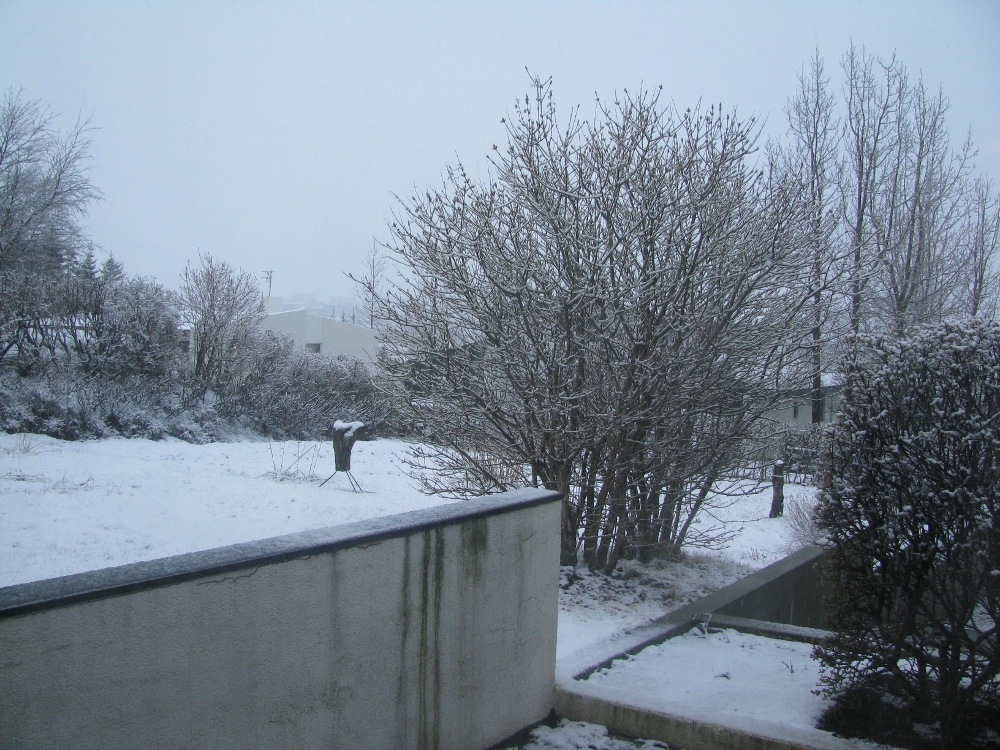Getting understood in Iceland: pre-aspiration. Posted by hulda on Apr 23, 2013 in Icelandic grammar, Uncategorized
 One way of describing spoken Icelandic is that Icelanders breathe it out. Take this literally: there are many “hidden” extra h-sounds in the language that aren’t written down but nevertheless are there, which give Icelandic its trademark whisper-like sound that’s unlike all the other Nordic languages. I already wrote about some of them in the entry about sharp consonants, the h-sound that follows certain consonants such as “k” and “t”, so let’s now look at a completely other kind of hidden h.
One way of describing spoken Icelandic is that Icelanders breathe it out. Take this literally: there are many “hidden” extra h-sounds in the language that aren’t written down but nevertheless are there, which give Icelandic its trademark whisper-like sound that’s unlike all the other Nordic languages. I already wrote about some of them in the entry about sharp consonants, the h-sound that follows certain consonants such as “k” and “t”, so let’s now look at a completely other kind of hidden h.
Aðblástur (= pre-aspiration)
Certain double consonants and combinations are pronounced with an extra h-sound between them and the vowels that come right before them. The h is audible and clearly pronounced, and with a couple of exceptions you cannot leave it out, else no one is going to understand what word you’re trying to say. The double consonants that do this are:
kk, pp and tt
For example when reading out aloud the following sentence
“Ekki meira, takk.” (= No more [for me], thank you)
and extra h-sound is added before both double k clusters:
“EHkki meira, taHkk.”
Or:
“Ég er svo heppinn að vera hér.” (= I’m so happy to be here.”
“Ég er svo heHppinn að vera hér.”
“Erum við eHkki á jeHppa?”
Kl, pl, tl, kn, pn, tn
are the consonant combinations that do the same.
“Íslenskt vatn er best í heimi.” (= Icelandic water is the best in the world.)
“Íslenskt vaHtn er best í heimi.”
Sometimes when Icelanders speak quickly they leave some sounds only half pronounced, so it’s not unusual to hear the word vatn (= water, lake) pronounced both vaHtn and vaHn. In compound words where vatn is in the genitive form vatns, it turns into vaHS!
“Hekla er um 1500 metra hátt.” (= Hekla is about 1500 metres tall.”
“HeHkla er um 1500 metra háHtt.”
“Opnaðu augun þín.” (= Open your eyes.)
“OHpnaðu augun þín.”
It’s important to not confuse the aðblástur with önghljóð, a voiceless fricative sound that Icelandic also has. Aðblástur is a clear h-sound, not formed in the back of one’s mouth but in the center. If pronouncing it feels difficult at first, try to make a small pause between the consonant clusters that demand it – f.ex. instead of saying “teHppi” you can say “te-ppi” – the end result sounds very nearly the same.
Photo taken late in the evening last Saturday – Icelandic spring is full of surprises. At least it’s also very light!
Exceptions:
Compound words are naturally an exception. For example any word that begins with út- will rarely get a pre-aspiration between ú and t. Útlendingur (= a foreigner) gets no aðblástur, and neither does útlit (= appearance).
Consonant clusters at the beginning of a word will naturally not get an aðblástur, because it can only happen between vowels and consonants. Klaustur (= monastery, cloister) is not Hklaustur. 😀
If the word has a -lega or a -leysi ending with a k in front of it it will not get an aðblástur. Mjúklega (= gently) and sakleysi (= innocence) neither get an aðblástur.
There’s also one curious exception that may or may not come into action if the vowel before the consonants is either í, ý, ei, ey or æ. Sometimes instead of a h-sound you’ll hear a y-/j-sound instead. Don’t worry too much about which way you pronounce this one, these are the words that Icelanders will easily understand in both forms of pronunciation.
As a common example: ætla (= to plan, to intend) can be pronounced both æHtla and æYtla/æJtla. Technically speaking æHtla is the correct form, but it sounds a little more natural to pronounce it as æYtla/æJtla when talking normally. For example, when Icelanders order food at a restaurant they commonly say “Ég æJtla að fá…” (= I’m going to have/I’d like to have…)
A small audio sample of how aðblástur, or pre-aspiration, sounds like.
Previous pronunciation posts:

Build vocabulary, practice pronunciation, and more with Transparent Language Online. Available anytime, anywhere, on any device.
About the Author: hulda
Hi, I'm Hulda, originally Finnish but now living in the suburbs of Reykjavík. I'm here to help you in any way I can if you're considering learning Icelandic. Nice to meet you!






Comments:
Karine Chevrier:
This is a very interesting blog and post. Icelandic phonetics is so rich and original. I would be interested in learning about the origin of the aðblástur. Has it always been there and do the other scandinavian languages lost it later?
hulda:
@Karine Chevrier I’m afraid that’s difficult to say. The common root for all Nordic languages with the exception of Finnish is Old Norse and there is no existing proof on how it was pronounced. There are certain similarities between the languages that could hint that aðblástur has existed in them as well in the same way it exists in Icelandic, but it could also be that Icelandic has developed on its own, apart from the others, due to its location.
I find it interesting though that in a text by Jónas Hallgrímsson from the year 1835 many sounds are written like they’re supposed to be pronounced, f.ex. “sjer” instead of “sér and “gjetað” instead of “getað”. Yet the text makes no note of the pre-aspiration.
Nathan:
@Karine Chevrier From what I can tell, aðblástur has multiple origins. In the cases in which aðblástur is indicated by a reduplicated consonant (tt, kk, pp), there was always a phoneme preceding the second consonant, though that phoneme varies by language. Compare Icelandic dottir and drekka with Old English dohtor and drincan (I can’t think of any examples for pp at the moment). The difference in spelling is a matter of influence. In Greek, a reduplicated gamma (γγ or gg) makes an /ng/ sound. This convention was brought to the ancient Goths by Ulfilas, who translated the Christian gospels into Gothic. The convention spread to the Nordic languages, while the continental Germanic languages maintained Latin spelling conventions.
On the other hand, the aðblástur preceding kl, pl, tl, kn, pn, and tn seems to have developed independently. I don’t currently have enough information to speculate on the origin of these aðblástar, nor do I know if they are present in Nordic languages other than Icelandic. Regardless, these aspirations do not appear in ancestral forms of the words, so they appear to have developed on their own separately from those preceding reduplicated vowels.
hulda:
@Nathan This was a very interesting read! Thank you!